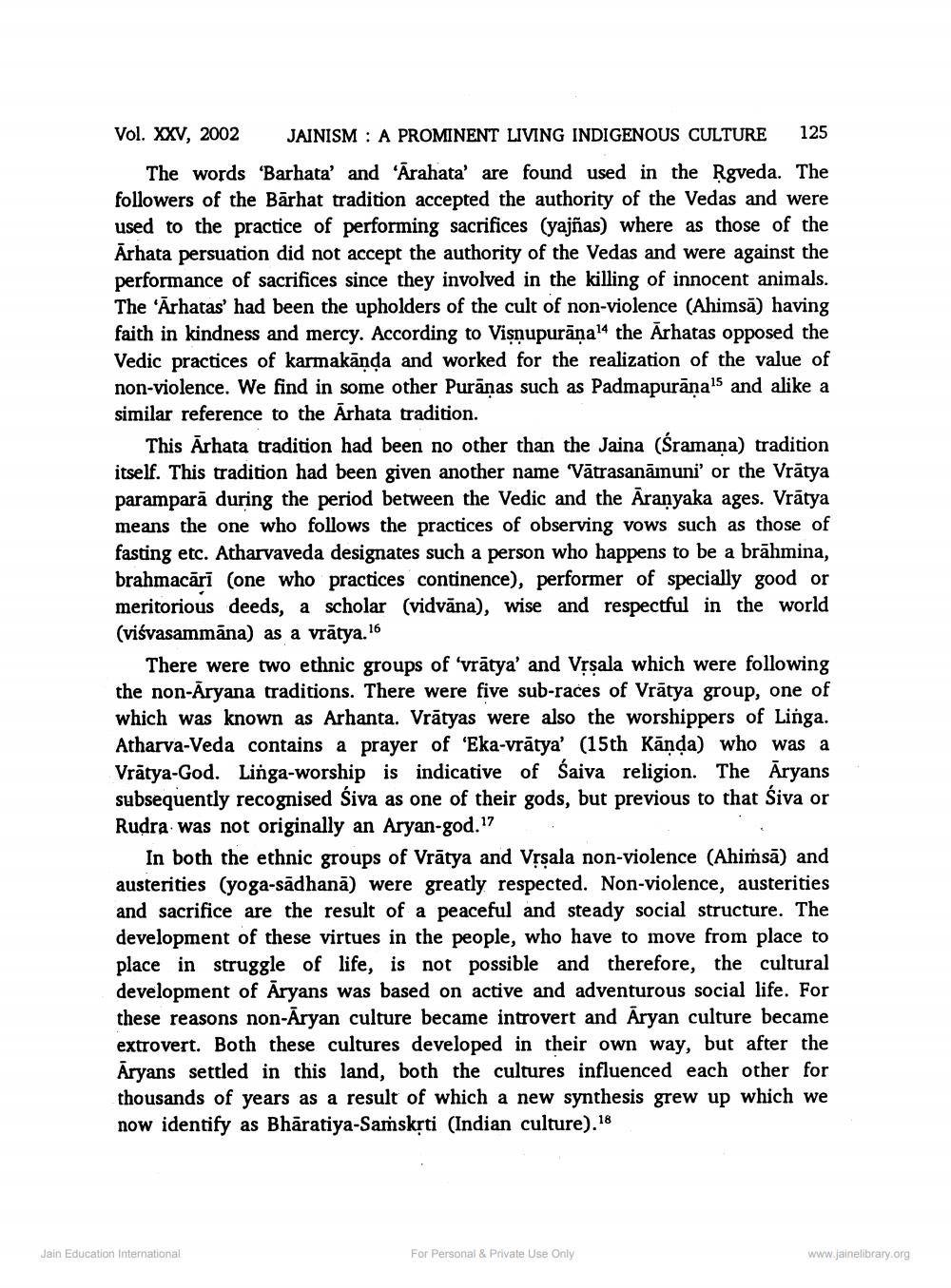________________
Vol. XXV, 2002
J AINISM : A PROMINENT LIVING INDIGENOUS CULTURE
125
The words 'Barhata' and 'Arahata' are found used in the Rgveda. The followers of the Bārhat tradition accepted the authority of the Vedas and were used to the practice of performing sacrifices (yajñas) where as those of the Ārhata persuation did not accept the authority of the Vedas and were against the performance of sacrifices since they involved in the killing of innocent animals. The 'Ārhatas' had been the upholders of the cult of non-violence (Ahimsā) having faith in kindness and mercy. According to Visnupurānal4 the Ārhatas opposed the Vedic practices of karmakānda and worked for the realization of the value of non-violence. We find in some other Purānas such as Padmapurāņa5 and alike a similar reference to the Ārhata tradition.
This Ārhata tradition had been no other than the Jaina (śramana) tradition itself. This tradition had been given another name Vātrasanāmuni' or the Vrātya paramparā during the period between the Vedic and the Aranyaka ages. Vrātya means the one who follows the practices of observing vows such as those of fasting etc. Atharvaveda designates such a person who happens to be a brāhmina, brahmacārī (one who practices continence), performer of specially good or meritorious deeds, a scholar (vidvāna), wise and respectful in the world (visvasammāna) as a vrātya. 16
There were two ethnic groups of 'vrātya' and Vrsala which were following the non-Aryana traditions. There were five sub-races of Vrātya group, one of which was known as Arhanta. Vrātyas were also the worshippers of Linga. Atharva-Veda contains a prayer of 'Eka-vrătya' (15th Kānda) who was a Vrātya-God. Linga-worship is indicative of Saiva religion. The Aryans subsequently recognised Siva as one of their gods, but previous to that Siva or Rudra was not originally an Aryan-god."
In both the ethnic groups of Vrātya and Vrsala non-violence (Ahimsā) and austerities (yoga-sādhanā) were greatly respected. Non-violence, austerities and sacrifice are the result of a peaceful and steady social structure. The development of these virtues in the people, who have to move from place to place in struggle of life, is not possible and therefore, the cultural development of Aryans was based on active and adventurous social life. For these reasons non-Aryan culture became introvert and Aryan culture became extrovert. Both these cultures developed in their own way, but after the Aryans settled in this land, both the cultures influenced each other for thousands of years as a result of which a new synthesis grew up which we now identify as Bhāratiya-Saṁskṛti (Indian culture).18
Jain Education International
For Personal & Private Use Only
www.jainelibrary.org




